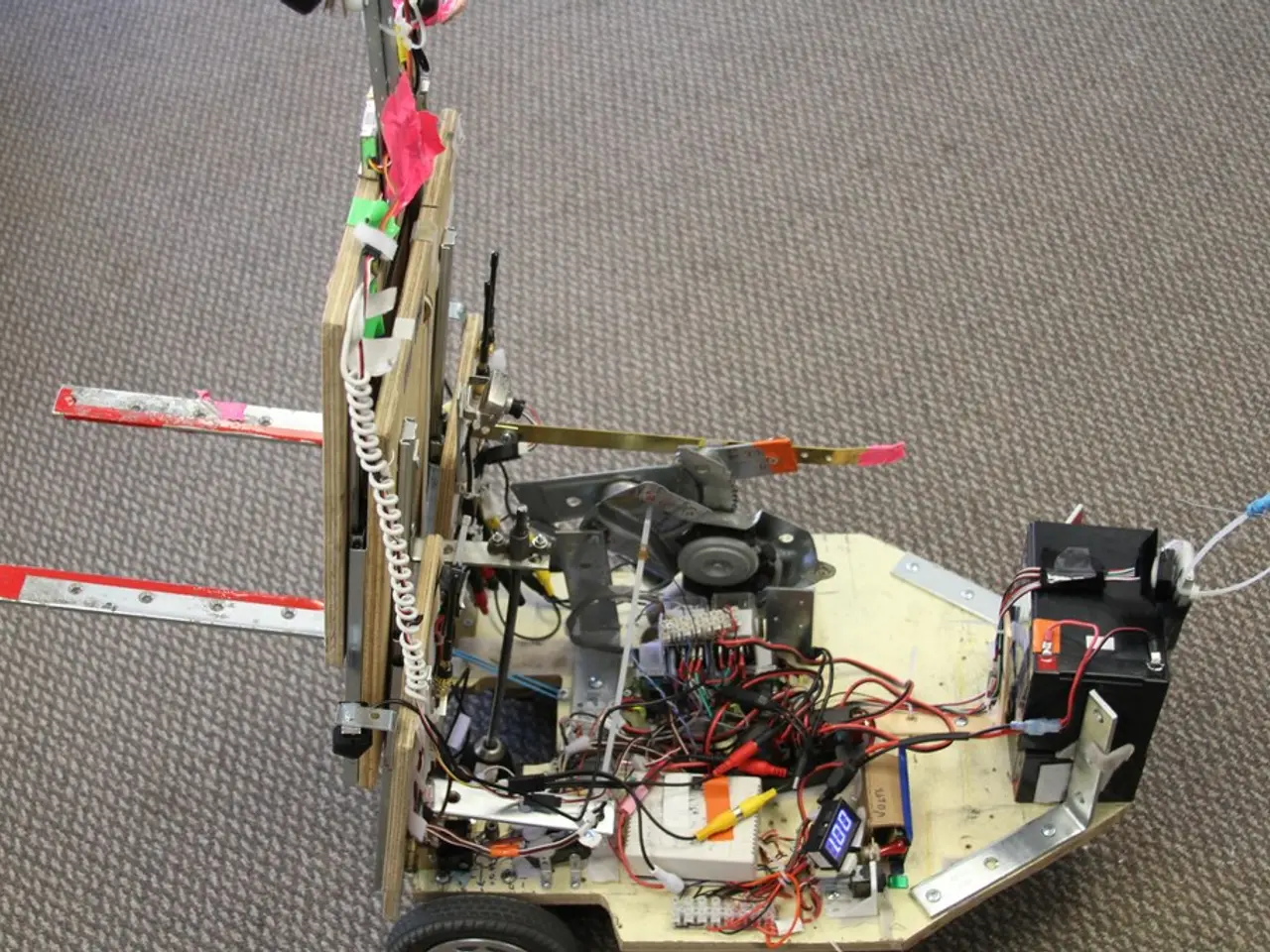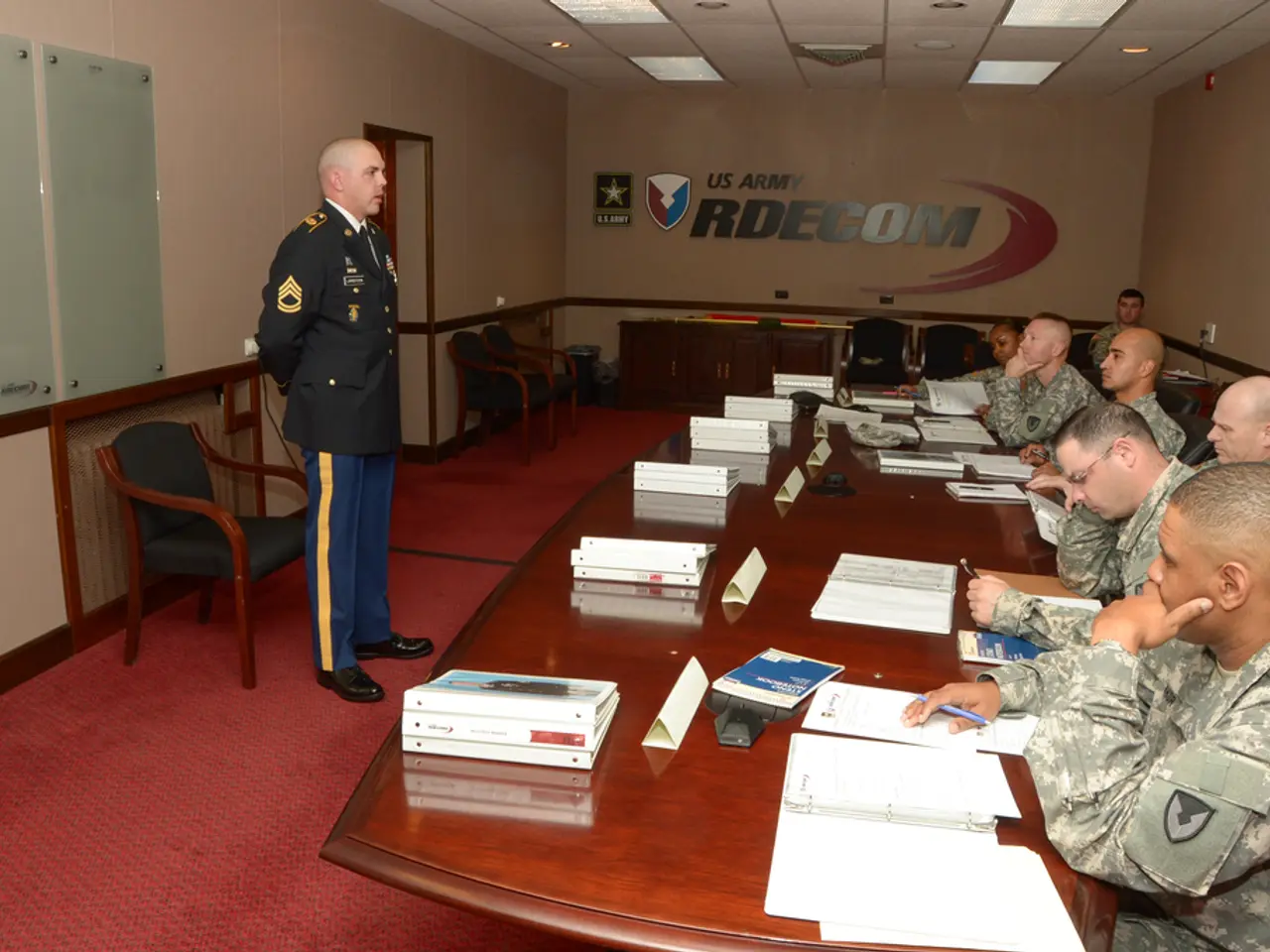senior military leaders advocate for E-7, F-35, and air dominance in their arguments
The retired Air Force generals have expressed concerns about the feasibility of a space-based alternative for air and ground target indication, citing significant technical and operational challenges that need to be addressed.
In a recent call, the generals, including Gen. Moseley and Gen. Fogleman, argued against the proposed "divest to invest" strategy and advocated for more funding and a redistribution of Pentagon funding to maintain air superiority for the joint force.
Gen. Moseley suggested replacing older airframes with F-35s and providing resources for the fighter's modernization, while Gen. Breedlove emphasized the F-35 as a priority, stating it is the most advanced U.S. fighter and the best way to answer the "fight tonight" requirement.
The generals also expressed concerns about the vulnerability of military space assets, particularly in low-Earth orbit, to nuclear detonations in space. Gen. Fogleman even suggested that the extra money needed to fight a Pacific war should come from the land forces.
However, the generals did not offer an opinion about the Air Force's long-term goal of buying 72 new fighters per year. Instead, they focused on the challenges of a space-based alternative for the E-7, which provides air battle management, a mission that a space-based capability does not address.
The Pentagon has stated that the E-7 is vulnerable to long-range missiles deployed by China, and that the U.S. will instead focus on a space-based capability for air- and ground-moving target indication. However, the generals and defense analysts argue that a space-based alternative for air and ground target indication is not readily available.
The technical complexity of space-based interceptors (SBIs) is a major challenge. Developing SBIs capable of destroying targets during boost and mid-course phases requires advanced kill vehicles with autonomous terminal guidance and in-flight target update capabilities. Engineering such systems, especially for atmospheric and exoatmospheric engagement phases, involves considerable technical difficulty, including navigation, propulsion, and communications in space environments.
Effective space-based systems must also integrate real-time sensor data from missile warning layers and other sensors to perform weapon-target pairing and engage multiple simultaneous targets. This requires sophisticated fire control elements (FCE) and ground control infrastructure.
Moreover, limitations in sensor coverage and sensor deployment logistics pose additional challenges. Ground-based sensors have difficulties tracking low-flying targets due to Earth’s curvature and terrain, and deploying a proliferated sensor mesh is complex. Even more so for space-based sensors, which must overcome atmospheric effects and require careful site selection and sensor integration. Power supply, communication robustness, and computational planning for sensor placement add to the challenge.
Industrial and budget constraints also pose challenges. While many of the needed technologies for deployable small radars and sensors are mature, scaling production affordably and aligning military requirements for space-based or proliferated sensor systems remain uncertain. The defense industrial base may lack readiness or incentives to invest in ambitious missile defense space systems outside traditional or startup sectors.
Historical and programmatic considerations also play a role. Similar initiatives like the Reagan-era Strategic Defense Initiative, which included space interceptors, failed to reach operational capability due to these complex technological and strategic challenges, underscoring ongoing risks in current efforts.
In summary, retired Air Force generals and defense analysts highlight that space-based target indication systems face formidable technical, operational, and industrial challenges. These include autonomous intercept capability development, real-time data fusion, sensor placement complexity, and production scalability—making such systems unavailable for immediate deployment. The generals continue to advocate for more funding and resources for the E-7 and the F-35, emphasizing their importance in maintaining air superiority and supporting the joint force.
- The generals have raised concerns about the Pentagon's focus on a space-based capability for air- and ground-moving target indication, citing technical complexities, operational challenges, and industrial constraints.
- Development of space-based interceptors (SBIs) capable of destroying targets during boost and mid-course phases necessitates advanced technology such as autonomous terminal guidance and in-flight target update capabilities.
- Effective space-based systems require sophisticated fire control elements (FCE) and ground control infrastructure to integrate real-time sensor data from missile warning layers and engage multiple simultaneous targets.
- Limitations in sensor coverage and sensor deployment logistics, both for ground-based and space-based sensors, pose additional challenges, including the difficulty in tracking low-flying targets and the complexity of deploying a proliferated sensor mesh.
- The generals have advocated for more funding and resources for the E-7 and the F-35, emphasizing their importance in maintaining air superiority and supporting the joint force.
- The lack of readiness or incentives within the defense industrial base to invest in ambitious missile defense space systems, coupled with historical and programmatic challenges, have been identified as ongoing risks in current efforts.




